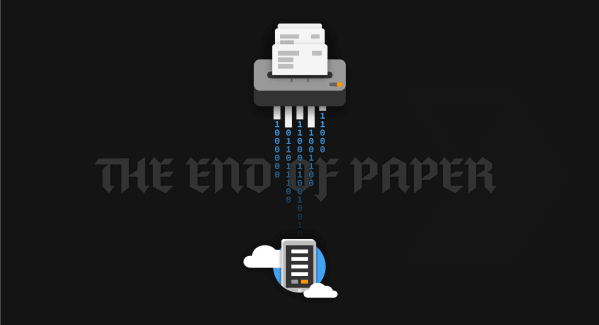The End of Paper: Announcing Digitized Trucking Documents
Vector is the first step in getting rid of that paper.

Do you like paper? We don’t.
March 21, 2020
And for these reasons:
- It’s slow to communicate
- It makes collaboration difficult across multiple people
- It’s error-prone
- It’s hard to audit, search, and correct mistakes
- It’s bad for the planet
However, in the trucking industry, we know that most businesses still run on paper. Day in, day out, stacks and stacks of paper.
That’s a real trailer of a Vector customer, filled with 10 tons of real paper, before they started using Vector.
We know that paper is vital to the running of your business; it’s the default way to communicate, well, everything. Whether it’s a Proof of Delivery, a Bill of Lading, or DVIR. Paper is sometimes the best way for two companies to communicate. It doesn’t require technology, it doesn’t require an integration, it just requires a pen and paper.
Today, you can still keep that simplicity, just by taking a picture of that paper, to automate a host of backend processes. Whether it is needing to invoice based on that paper, or to inform a mechanic of any tractor defects, technology allows drivers to inform the back office in seconds, not days after the event occurs.
The ultimate goal is not to eliminate paper, but to improve businesses’ productivity and profitability. We get it, your customers and partners still use paper, so you’re forced to conform to how they operate. That doesn’t mean you can’t begin eliminating as much paper as possible from your business. In today’s mobile and cloud-enabled world, with the wide adoption of smartphone connectivity is everywhere, and when it isn’t, Vector has an offline mode that stores all images and data for when there is. And with Vector’s easy-to-customize forms, your driver can enter that data directly, in digital form.
That’s why we are proud to announce our next feature, helping to end paper: digitized documents.
Sometimes, you may wish to send a PDF version of an electronic, fully digital document. You want to remove that paper internally, but externally, your world still runs on paper. Your customers and vendors still expect paper.
Digitized documents solve this problem. The receiver of that document may not have, or does not need, access to Vector. They just need the information contained in that document.
Examples could be:
- A proof of delivery that a customer needs to pay your invoice
- A DVIR that a third-party mechanic needs to ascertain fixes
- A digital trip sheet for a driver to record their trips
Example of a PDF digital trip sheet:
In all these examples, you can be fully digital within your company, but then communicate a standard pdf to any party outside your company, ensuring that they still receive the right information. Vector’s digitized documents are supported end-to-end throughout Vector, whether in email sharing, rendition billing, or FTP.
If you want to go fully digital and end paper like we do, get in contact with your customer success manager, and we can start to customize your paper forms today.
Don’t worry about everyone else not receiving your paper if you decide to go digital, since with digitized documents, we take care of that for you.
Subscribe to stay updated on Vector and logistics trends
" " indicates required fields
Continue reading
Ready to transform your supply chain?
Increase efficiency and productivity. Say goodbye to delays, handwriting errors, and time-intensive manual data entry.